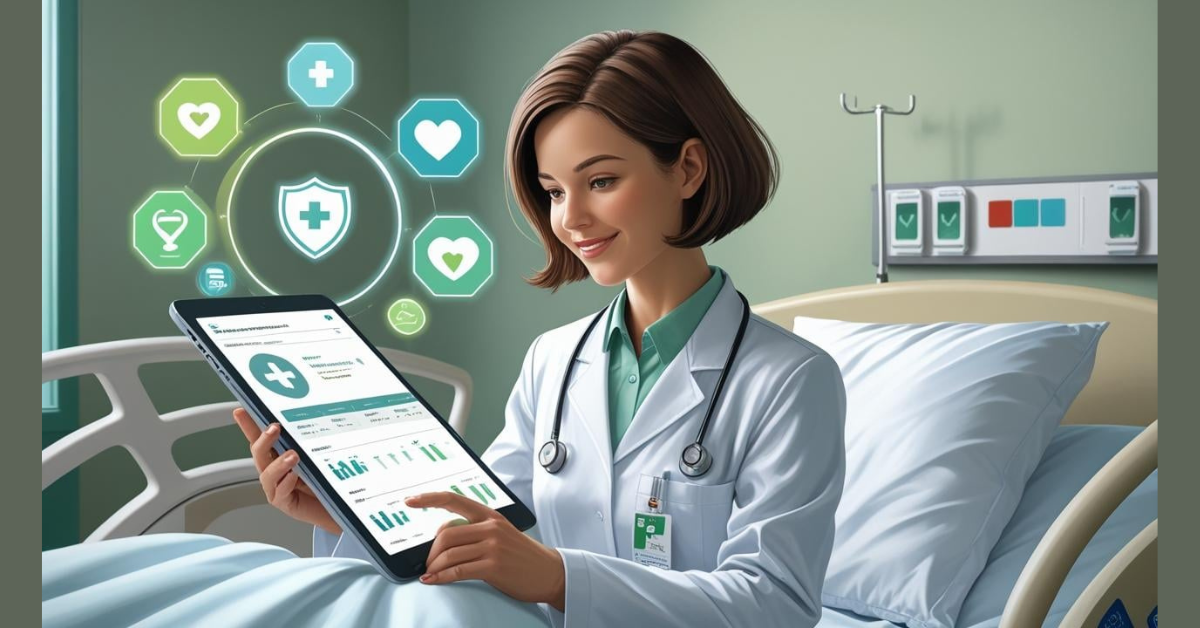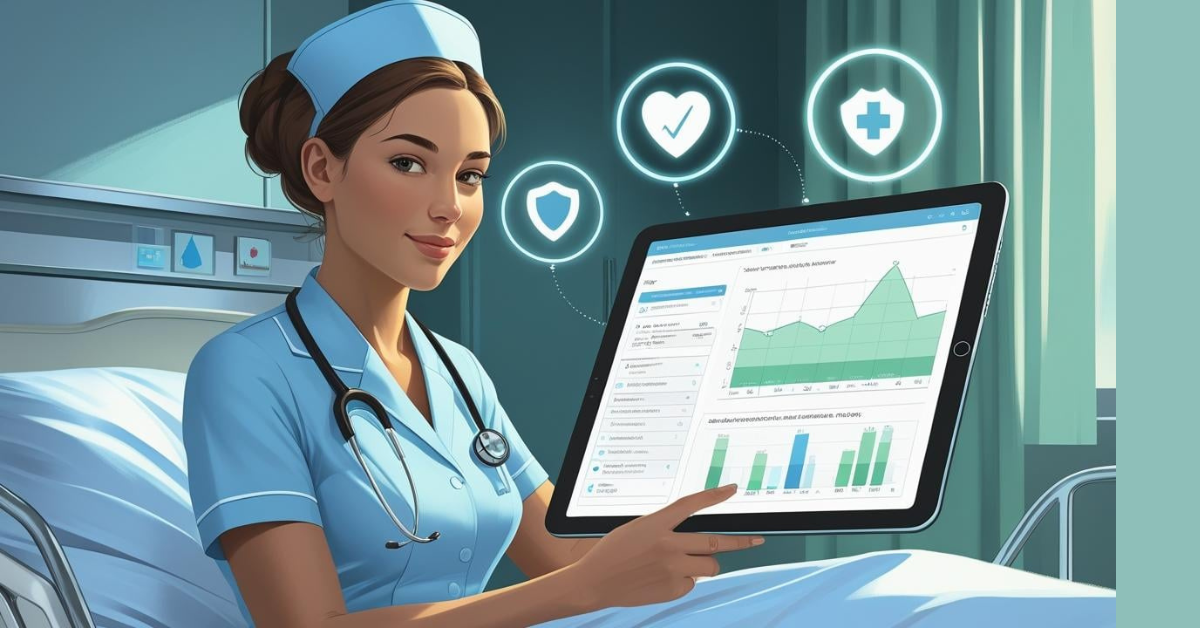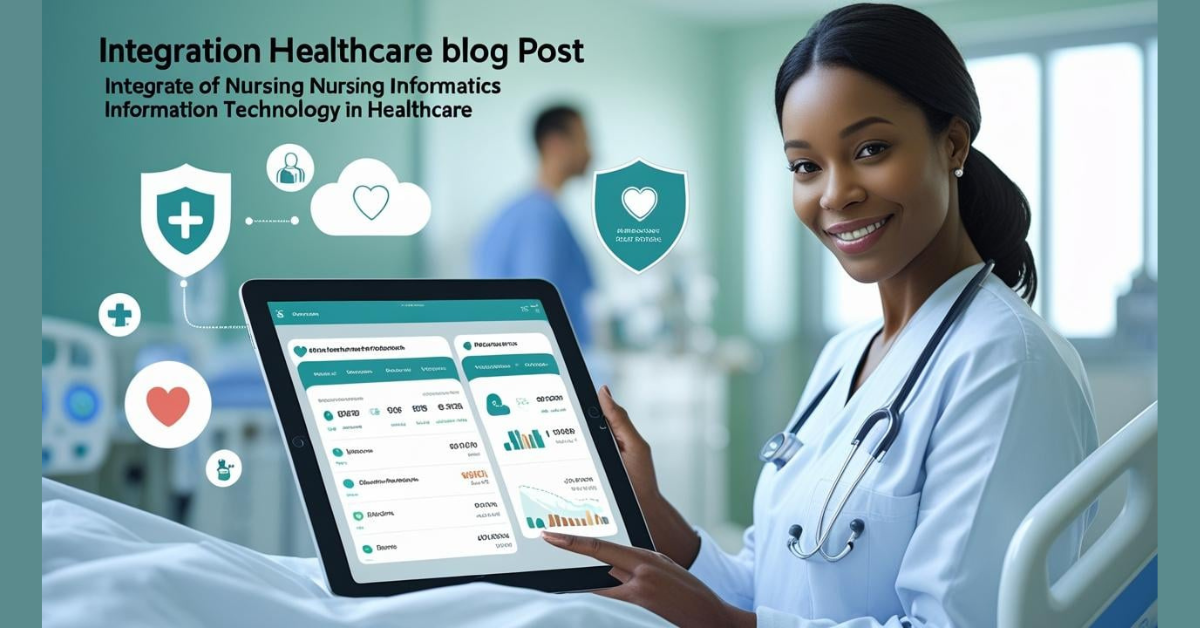What are Nursing Informatics and Information Technology for Safe and Quality Patient Care. Electronic health records (EHRs) and clinical decision support (CDS) systems provide nurses with real-time access to comprehensive patient data, enabling them to make informed decisions, reduce errors, and intervene in a timely manner.
The Nursing Informatics and Information Technology for Safe and Quality Patient Care
Nursing informatics (NI) plays a critical role in improving patient safety and quality of care by integrating nursing science, informatics, and computer science. It uses technology to manage and communicate data, information, knowledge, and insights into practice. This ultimately helps nurses make data-driven decisions and optimize healthcare delivery.
Information Technology for Safe and Quality Patient Care
Nurses deal with volumes of information on a daily basis. Safe and quality nursing care relies on a nurse’s ability to obtain adequate and appropriate information for effective decision making. Part of this includes development of basic computer literacy and information management skills to support all aspects of nursing practice. Nurse leaders and managers must understand how to integrate nursing informatics and health information technology (IT) to ensure the delivery of safe and quality nursing care.
They must recognize the importance of nursing data in improving practice, monitoring health-care and patient outcome trends, making judgments based on those trends, evaluating and revising patient care processes, and collaborating with others in the development of nursing systems (American Nurses Association [ANA], 2015; American Organization of Nurse Executives [AONE], 2011).
Nursing informatics integrates nursing science, computer science, information science, and IT to manage and communicate data, information, knowledge, and wisdom (e.g., appropriate use of knowledge to solve human problems) in nursing practice (ANA, 2008, p. 92). Although a relatively new specialty in nursing, informatics is essential to improving patient care and meeting regulatory requirements. Various legislative and regulatory requirements related to the advancement of informatics and the critical role informatics plays in the delivery of safe and quality patient care are discussed.
Also presented are common information systems employed in health care and the secure use of electronic health records and information systems. Finally, how nurse leaders and managers facilitate the use of IT by staff to improve work efficiency, reduce costs, foster effective communication, and enhance the quality and safety of patient care are discussed.
Understanding Nursing Informatics
To discuss nursing informatics, an understanding of common elements in the specialty is important, as is an at least cursory understanding of the more technical aspects. Basic Elements of Informatics Information systems are any systems, technology-based or otherwise, that store, process, and manage information at both the individual level and the organizational level. The two major types of information systems are administrative and clinical. Administrative systems encompass both administrative and financial systems.
Vendors provide either a suite of applications within a single system to satisfy the organization’s patient care needs or best of breed systems, which are designed for a specific specialty and do not tend to integrate well with other systems. Although most information systems are purchased from a vendor, an information system may be a home-grown system as well. Most organizations use a vendor-developed system because of the time required to develop a home-grown system. Vendor systems do allow for varying degrees of customization.
System acquisition is the process of obtaining an information system. The document that initiates this process with the vendor is a request for information (RFI) form from the vendor or a request for proposal (RFP) form, depending on the organization. The vendor provides details about the information system in both these processes. The format varies. The selection process extends until the contract is signed for the purchase of the system.
Activities that take place during this phase include establishing the steering committee, developing goals and objectives for the system, determining system requirements, evaluating vendor proposals, con ducting cost-benefit analysis, holding vendor demonstrations, and conducting contract negotiations (Wager, Lee, & Glaser, 2013). The purchase of the information system should be well integrated into the strategic plan for the organization. An information system provides an infrastructure for the organization and requires resources for development, maintenance, and eventual retirement.
Because it is such a large investment, the selection of the information system should be a thoughtful decision, and it is essential that the process includes input from the members of the organization, including nurses. Once the system is delivered, the life of the system begins. The system development life cycle (SDLC) refers to the life of the system. The phases of the SDLC are planning and analysis, design, implementation, and support and evaluation (Wager, Lee, & Glaser, 2013).
Nurse leaders and managers must be involved in all aspects of the process. They must be included from the beginning and have active roles in the acquisition of information systems, as well as all phases of the SDLC. Information technology (IT) combines computer technology with data and telecommunications technologies to provide solutions to the health-care industry. Some examples of the way IT supports safe and quality patient care are through
1) pro viding cues in the tools that are used for documentation that align with nursing best practice;
2) providing data elements for data collection
3) real-time display of pertinent patient information. Nursing informatics facilitates decision making in all nursing roles through the use of information systems and technology. An essential part of nursing
informatics is the computerized patient record. Patient records are needed for communication, legal documentation, and billing and reimbursement (Wager, Lee, & Glaser, 2013). Electronic records improve research and quality management, metrics, data quality, and access to data that support population health. The three most common types of electronic records are the electronic medical record (EMR), the electronic health record (EHR), and the personal health record (PHR).
All of these electronic records contain medical information and details about the care provided to the patient. Many people use the terms electronic medical record and electronic health record interchangeably; however, there is a difference between these technologies. The electronic medical record (EMR) is the electronic record of a patient that is used by a single organization. The electronic health record (EHR) is used by more than one organization, provides information throughout the continuum of care, and can be shared by other organizations.
The EHR also provides interoperability among systems or locations (Sewell, 2016). This means that EHR information can be accessed from more than one location or organization. The personal health record (PHR) is an electronic form of a patient’s medical record that the patient can take with him or her or send to a health-care provider (Hebda & Czar 2009). The patient manages the PHR, including setting up, accessing, and updating the record (Wager, Lee, & Glaser, 2013). The Institute of Medicine (IOM; 2003) describes eight core functions of an EHR:
1) health and information data,
2) result management,
3) order management,
4) decision support,
5) electronic communications and connectivity,
6) patient support,
7) administrative processes and reporting, and
8) reporting and population health.
The strength of the data in an EHR can be augmented through the use of tools for financials and clinical decision support. These tools provide the ability to compare or combine data from clinical, financial, and administrative sources, thus supplying an added benefit to the organization. Depending on the health-care organization, the specialty systems with these tools may be bought from the same vendor or from multiple different vendors; this has a bearing on how difficult it will be to integrate patient information across systems or into one central data repository.
Integration of clinical and financial information is becoming increasingly important in today’s health-care environment because of regulatory quality and financial integration. Another benefit of electronic records is that multiple clinicians are able simultaneously to access the patient’s electronic chart, and this eliminates the risk of loss that often results from tracking paper documentation.
Technical Aspects of Informatics
As a nurse leader and manager or an informatics nurse, it is extremely beneficial to have some technical level of understanding of an information system. The IT personnel who maintain the system and the clinical specialists who actually use the systems may have entirely different educational backgrounds and may think and communicate differently. Understanding these differences will help to improve communication between these groups, and that, in turn, promotes safe and quality patient care.
Network
A network is the fundamental framework of an information system that allows electronic devices to transfer information to each other. The Internet is the most common example of a public network. Most health-care organizations have their own networks within the confines of their system, called intranets (Hebda & Czar, 2009). With the advancement of mobile computing in the health-care industry, most organizations also offer access to their network through wireless technology. This access requires a separate network using wireless antennas for coverage.
Data
Data comprise a collection of information, facts, or numbers. Nurses collect and manage data constantly when caring for patients. Nurse leaders and managers gather, manage, analyze, and interpret data to ensure effective operation of the unit as well as safe and effective delivery of nursing care.
Database
The central place that stores data is referred to as a database. Databases provide a key location for data to be stored and retrieved for analysis when needed. This is where the importance of discrete data, discussed in more detail later in this topic comes into play because these data can be stored in the same place within the data base and easily compared. (For example, when a nurse documents “yes” as a discrete response to the question “Does the patient have a history of falls in the last 6 months?”
It is much easier to find and compare this value in the database.) A clinical data repository is a database in which data from all information systems within an organization is kept and controlled (Hebda & Czar, 2009). Organizations may extract information from the database and use it to create new knowledge, establish best practice, or predict outcomes; this extraction is a form of data mining, dis cussed next (Connolly & Begg, 2005; Sewell, 2016).
Data Mining
EHRs contain an enormous amount of data. To collect data from these records manually is an unrealistic undertaking. Data mining is the process of extracting specific data or knowledge that was previously unknown (Sewell, 2016). This process can be used to understand patients’ symptoms, predict diseases, and identify possible interventions (Sewell, 2016).
All nurses should have a basic understanding of data mining. Nurse leaders and managers use data mining to extract, predict, evaluate, and apply knowledge to develop best practices in patient care, delivery, staffing and scheduling, error reporting, incident reporting, budgeting, and forecasting and planning.
Interfaces
The health-care setting is brimming with technological devices that are capable of gathering and/or analyzing electronic data. Unfortunately, these devices are not all designed and built by the same manufacturer or with the same purpose in mind, so they often do not communicate with other devices or systems. Interfaces are used to match data points from one system to the other so that this information can be communicated among systems or sent to a main information system for collective use and analysis.
These interfaces can send information as it is gathered (real-time processing) or can function with a delay (batch processing) to save system resources (Hebda & Czar, 2009). Interfaces can also allow devices to communicate directly with an information system, thereby reducing the time nurses spend manually entering the information as well as eliminating data entry errors. For example, a health-care organization can use a device to gather vital sign data and transmit it through an interface into a patient’s medical record.
Decision Support Systems
With the use of an information system, a health-care organization may choose to use tools called decision support systems, which provide warnings or other decision support methods to help health-care professionals become more aware of certain clinical information (i.e., infection precaution) or use evidence-based practices (Hebda & Czar, 2009).
Rules and Alerts
Health-care organizations may also use rules and alerts to provide decision sup port. Rules require an action within the system to trigger or “fire” them, such as a patient’s being admitted with certain criteria, a laboratory result, or information documented by a health-care professional. For example, during influenza season an organization may have a rule that is triggered by all patients admitted with an inpatient status from October through April that reminds the health-care provider to perform influenza screening. A more obtrusive decision support tool is an alert.
An alert could be straightforward, such as a warning that a patient has tested positive for a resistant organism (e.g., methicillin-resistant Staphylococcus aureus [MRSA]) and to implement precautions per institutional policy. Alerts could also be used to require the nurse to ac knowledge the warning or select a reason for override (if clinically appropriate).
For example, health-care providers may receive an alert when ordering a medication that is contraindicated for the patient. They may acknowledge the warning and remove the order, or they may override it for a valid reason. The risk with alerting is that it can lead to “alert fatigue” among clinicians, in which they become used to the warnings and start to ignore them, often not realizing what the warnings said. Rules and alerts should be used on a limited basis and focus on the most crucial patient care issues.
Standardized Languages
Standardized languages are used in information systems to enable understanding among disciplines and across information systems. This common language allows for streamlined sharing of information because the same terms are used by everyone to describe the same condition. Standardized language is important for effective data mining and is required for nursing documentation in EHRs (ANA, 2008).
Using standardized language ensures that medical information as well as nursing actions and outcomes are included in EHRs and provide data that may need to be analyzed. Health Level Seven International is an American National Standards Institute accredited nonprofit organization that provides a common platform for information systems or devices to exchange information among other systems or devices (Health Level Seven International, 2007–2016).
Related Post:
Read More:
https://nurseseducator.com/didactic-and-dialectic-teaching-rationale-for-team-based-learning/
https://nurseseducator.com/high-fidelity-simulation-use-in-nursing-education/
First NCLEX Exam Center In Pakistan From Lahore (Mall of Lahore) to the Global Nursing
Categories of Journals: W, X, Y and Z Category Journal In Nursing Education
AI in Healthcare Content Creation: A Double-Edged Sword and Scary
Social Links:
https://www.facebook.com/nurseseducator/
https://www.instagram.com/nurseseducator/
https://www.pinterest.com/NursesEducator/
https://www.linkedin.com/in/nurseseducator/
https://www.researchgate.net/profile/Afza-Lal-Din
https://scholar.google.com/citations?hl=en&user=F0XY9vQAAAAJ



Татуировки — это форму самовыражения, где каждая линия несёт личную историю и подчеркивает индивидуальность человека.
Для сотен людей тату — душевный акцент, который вдохновляет о преодолённых трудностях и дополняет жизненный опыт.
Сам акт нанесения — это творческий диалог между художником и клиентом , где тело становится полотном эмоций.
тату краски
Современные стили , от акварельных рисунков до традиционных орнаментов , позволяют воплотить любую идею в гармоничном исполнении.
Эстетика нательного искусства в их вечности вместе с хозяином , превращая воспоминания в живой символ внутреннего мира.
Подбирая эскиз, люди раскрывают душу через формы, создавая личное произведение, которое наполняет уверенностью каждый день.